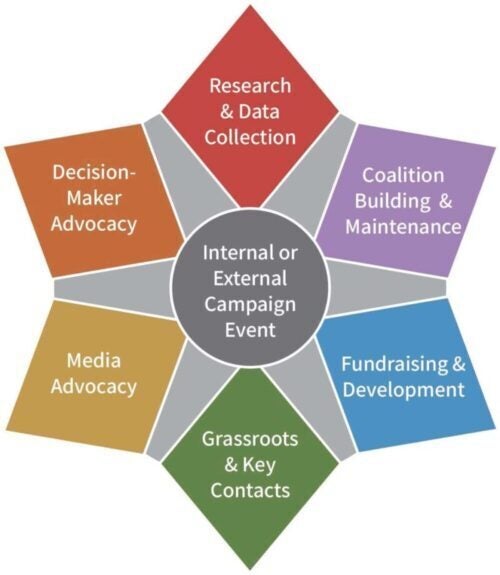Advocacy coalitions are groups of organizations that come together to achieve a common policy goal. Member organizations may have nothing in common but this one campaign goal and may, in fact, oppose each other on other issues, but they put that aside to work together on a shared advocacy goal.
Here is an example:
Make it easier for lawmakers to satisfy many organizations at once rather than having to satisfy each of those organizations one by one. You may not need a highly formal coalition to win, but it will add credibility if you can get a diverse array of organizations and businesses to endorse your policy proposal. Why? Simply because decision-makers are influenced by coalitions. Demonstrating the breadth of support for your issues can done clearly with a formal sign-on letter. Here are sample sign-on letters for restricting youth access to supplements and reducing digitally altered ads.
Coalitions make it easier for lawmakers to satisfy many organizations at once rather than having to satisfy each of those organizations one by one. A powerful coalition list is one that anticipates and answers the toughest questions about your policy proposal. Click here for a few examples.
Our job is to make it easy for these partners to be advocates for policy change. Providing them with customizable fact sheets, talking points, newsletter articles, and including their relevant message points in your communications to lawmakers, the media, and grassroots advocates are great ways to engage multiple messengers for your policy change needs.
If you are leading the overall campaign, part of your job is not just to recruit these coalition partners, but to maintain some regular communication with them throughout the campaign. That could be regular in-person meetings, but it can also be regular email updates, invitations to grassroots training webinars, lawmaker visits, and sharing relevant news and information. Many of the coalition partners you want to engage will have other priorities so try to make it easy for them to participate. Assign one or two people to serve as the main point person dealing with coalition partners so your partners will have a clear sense of their go-to person for the campaign. Click here for our organizer’s checklist for effective coalition meetings.
Finally, click here for some helpful tips to keep in mind when building and managing a coalition – no matter how loose.





